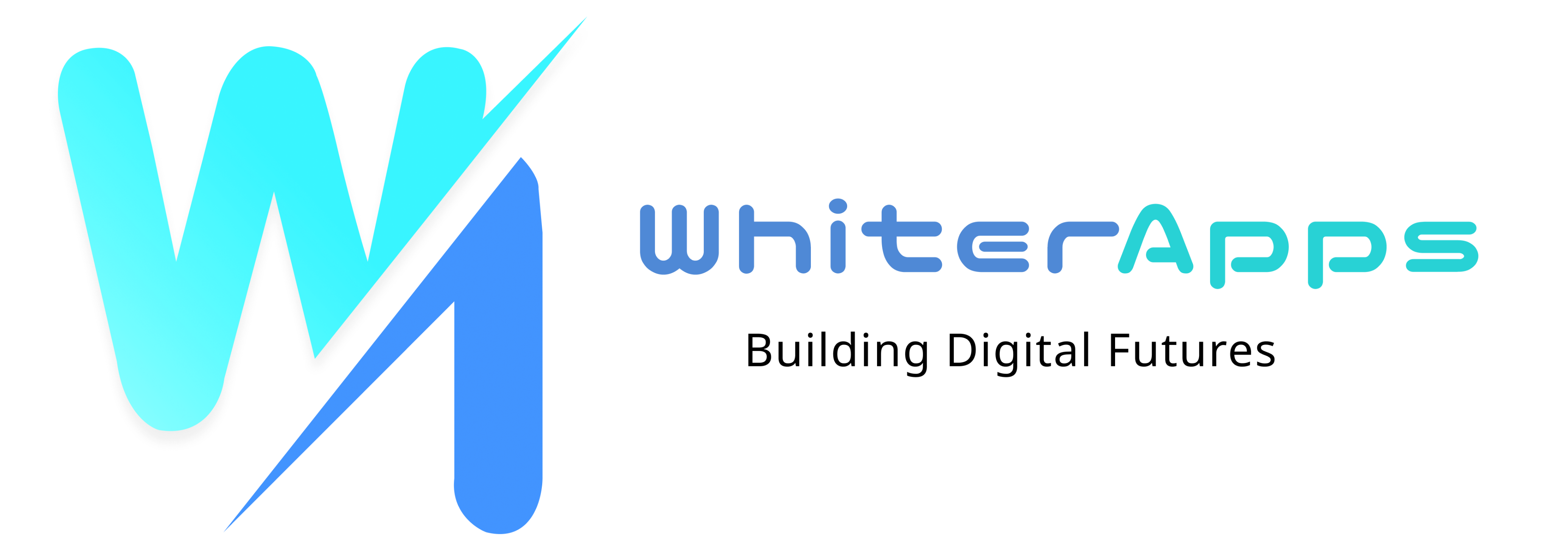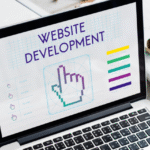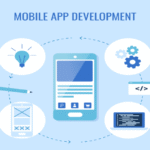Technology’s Crucial Role in Meternal & Child Health
In today’s fast-paced world, technology is more than just a convenience. It is a lifeline for mothers and children navigating the complexities of health. Imagine a young mother in a rural area receiving information about prenatal care on her smartphone or a healthcare provider using advanced AI to detect potential complications early. These innovations are not just enhancing care; they are transforming lives.
In this blog, we will explore the necessity of technology in MCH, its impact, the role of AI in diagnostics, considerations for making apps user-friendly, and highlights eight transformative apps revolutionizing maternal and child health.
Content Over View:
- The need for technology in Maternal & Child Health
- Impact & Key Features of Technology in Maternal & Child Health
- Role of AI in Diagnostics in Maternal & Child Health
- What can be implications made to make apps more user-friendly in Maternal & Child Health
- Crucial Role of App & Software Developers in Maternal & Child Health
- 8 Apps that revolutionize Maternal & Child Health
- Conclusion.
The need for technology in Maternal & Child Health
Every year, approximately 295,000 women die during pregnancy and childbirth, and 5.2 million children under five lose their lives. These statistics are stark reminders of the challenges we face. Yet, technology offers hope:
Improving Access to Care: – Telemedicine and mobile health (mHealth) solutions are making a world of difference for moms in areas where healthcare isn’t easy to come by. Here’s how:
- Moms can chat with doctors or healthcare specialists from the comfort of their home, with no travel needed.
- They can easily get their hands on important health tips and information, which can be a game-changer for their family’s well-being.
- Quick help and health advice are now just a phone call or a click away, making it easier to tackle health issues promptly.
- These technologies are a lifeline for prenatal and postnatal care, helping moms and their babies get a healthier start.
- Routine health check-ups or urgent medical questions? Mobile devices bring these services straight to their fingertips, simplifying healthcare in a big way.
Electronic health records (EHRs): – Play a crucial role in enhancing data collection for maternal and child health.
- Enable healthcare providers to efficiently track and analyze vital health metrics.
- Cover areas such as prenatal care, maternal health status, and child immunization records.
- Include tracking of growth and development milestones and any potential health concerns.
- Empower healthcare professionals to provide more personalized and effective care.
- Aid in identifying trends and making informed decisions to improve health outcomes.
Empowering Patients: – Health apps supply women with a variety of tools and resources, facilitating informed health decisions.
- Essential for empowering women, these apps foster a sense of autonomy and control over personal well-being.
- They offer personalized health information, enabling women to tailor their health strategies.
- By including monitoring tools, these apps allow women to track their health metrics and progress.
- Educational resources within the apps provide valuable insights, further supporting informed decision-making.
- Overall, health apps play a pivotal role in enabling women to proactively manage and take charge of their health and wellness.
Impact & Key Features of Technology in Maternal & Child Health
The incorporation of technology in Maternal and Child Health (MCH) goes beyond mere statistics; it profoundly impacts real lives. Imagine the scenario where a mother, residing in a remote area, can access medical advice from a doctor without undertaking a long journey. Furthermore, picture a nurse efficiently overseeing multiple patients simultaneously, thanks to a sophisticated digital platform that enables remote monitoring and care.
| Benefit | Description | Impact on MCH |
| Improved access to care | Remote consultations via telemedicine | Reduces travel barriers for patients, saving time and stress |
| Enhanced Data Collection | Use of EHRs for better patient tracking | Supports informed clinical decisions, ultimately saving lives |
| Education & Empowerment | mHealth apps offering health information | Empowers women to make informed choices about their health and that of their children |
| Community Engagement | Online support groups and social media | Fosters emotional support, creating a network of encouragement and understanding |
| Remote Monitoring | Wearable devices for health tracking | Enables proactive health management, ensuring timely interventions |
Role of AI in Diagnostics in Maternal & Child Health
Artificial intelligence (AI) is becoming increasingly integral to maternal and child health diagnostics. Its capabilities in analyzing vast amounts of data to identify patterns and predict potential complications are transformative.
1. Predictive Analytics
AI algorithms can analyze a woman’s medical history, lifestyle factors, and demographic information to predict risks associated with pregnancy. For example, these systems can identify women at higher risk for gestational diabetes or preeclampsia by examining a combination of factors, such as age, weight, and previous pregnancy complications. By predicting these risks, healthcare providers can implement preventative measures, improving outcomes.
2. Image Analysis
AI-driven imaging technologies, particularly in ultrasound, have shown promise in detecting fetal abnormalities. Traditional ultrasound analysis relies heavily on the expertise of the technician, but AI can enhance accuracy by identifying subtle patterns that may indicate issues such as congenital anomalies. This capability not only leads to earlier detection but also allows for timely intervention and better-informed parental decision-making.
3. Decision Support Systems
AI can support healthcare providers by offering evidence-based recommendations tailored to individual patient profiles. Decision support systems can guide providers through complex cases, ensuring that care is consistent with the latest research and guidelines. This support can be particularly beneficial in resource-limited settings where healthcare providers may have varying levels of expertise.
4. Natural Language Processing
AI tools that utilize natural language processing (NLP) can analyze patient notes and health records to extract valuable insights. By identifying key information related to maternal and child health, these tools can facilitate improved care coordination and communication among healthcare providers. For instance, an NLP system can highlight relevant past medical history during consultations, ensuring that important information is not overlooked.
What can be implications made to make apps more user-friendly in Maternal & Child Health
As the demand for technology in MCH grows, the focus on developing user-friendly applications becomes crucial. Here are several implications to consider when designing these apps:
1. Intuitive Design
User experience should be a priority in app development. Intuitive design features, such as simple navigation, clear icons, and an uncluttered interface, make it easier for users to engage with the app. An intuitive design is particularly important for pregnant women and new mothers, who may be dealing with fatigue and information overload.
2. Multilingual Support
Given the diverse populations that apps aim to serve, providing multilingual support is essential. Apps should offer language options that cater to the community they serve, making health information accessible to non-English speakers. This inclusivity can significantly improve health literacy and ensure that all women have access to crucial health information.
3. Personalization
Personalized experiences can significantly enhance user engagement. Apps that tailor content based on individual user data—such as gestational age or specific health concerns—foster a sense of relevance and ownership. For example, a pregnancy app could provide customized checklists and tips based on the user’s current week of pregnancy, making the information more applicable and useful.
4. Integration with Wearable Devices
The integration of mobile apps with wearable health devices can streamline data collection and enhance health monitoring. For instance, connecting a smartwatch that tracks heart rate or physical activity can provide users with real-time feedback about their health, encouraging healthier behaviors and facilitating communication with healthcare providers.
5. Community Features
Incorporating community features into apps can create a supportive environment for users. Forums, chat features, and resource-sharing capabilities can foster peer interaction, allowing women to connect, share experiences, and seek advice. This social support can be particularly beneficial during pregnancy and early motherhood as women navigate new challenges.
6. Offline Functionality
In regions with limited internet connectivity, offline functionalities are vital. Apps should allow users to download critical content for later access, ensuring that they have vital information even when they cannot connect to the internet. This feature can be particularly useful in rural areas with inconsistent internet access.
7. Regular Updates and Feedback Loops
Continuous improvement based on user feedback is essential for app success. Regular updates can address bugs, introduce new features, and improve overall user experience. Additionally, soliciting feedback from users can provide valuable insights into their needs and preferences, allowing developers to refine and enhance the app continually.
Crucial Role of App & Software Developers in Maternal & Child Health
App and software developers are at the forefront of integrating technology into maternal and child health (MCH). Their work not only involves coding but also understanding the unique needs of healthcare providers and patients. Here’s how they contribute significantly to this field:
Key Contributions
User-Centered Design:
- Developers employ user-centered design principles to create intuitive interfaces that cater to diverse populations, including women in varying cultural contexts and those with low digital literacy.
- Conducting user testing and gathering feedback helps refine the app’s functionality and accessibility, ensuring that it meets the needs of its intended users.
Integration of Data Analytics:
- By implementing robust data analytics, developers enable healthcare providers to make informed decisions based on real-time data. This includes tracking maternal health metrics, fetal development, and vaccination schedules.
- Analyzing trends and outcomes allows for the identification of high-risk cases and informs preventive measures.
Ensuring Data Security:
- Developers prioritize data security and privacy, which are critical in healthcare applications. They implement encryption and adhere to regulations like HIPAA (in the U.S.) to protect sensitive patient information.
- Building trust with users by ensuring their data is secure fosters greater adoption of these technologies.
Facilitating Telemedicine:
- Software developers create telehealth platforms that allow healthcare providers to consult with patients remotely. This is particularly vital in regions with limited access to healthcare facilities.
- By integrating video conferencing, scheduling tools, and secure messaging, developers enhance the quality of care and patient engagement.
Collaborating with Healthcare Professionals:
- Successful app development involves collaboration with healthcare professionals to ensure that the applications address real-world challenges in maternal and child health.
- Input from obstetricians, pediatricians, and public health experts helps shape features that improve health outcomes.
Adapting to Emerging Technologies:
- Developers stay abreast of advancements in artificial intelligence, machine learning, and wearable technology. Incorporating these technologies into MCH applications can lead to innovative solutions, such as predictive analytics for identifying at-risk pregnancies.
- By leveraging these tools, developers can create personalized health experiences that adapt to users’ needs.
8 Apps that revolutionize Maternal & Child Health
| App Name | Primary Function | Unique Feature |
| Ovia Health | Personalized tracking for pregnancy and postpartum care | Extensive database of pregnancy resources |
| What to Expect | Daily fetal development updates and community support | Interactive forums for user engagement |
| Baby Tracker | Logs feeding, diaper changes, and sleep patterns | Comprehensive tracking capabilities |
| Glow Nurture | Tools for monitoring pregnancy milestones | Personalized health tips based on user data |
| Mango Health | Reminders for medication adherence | Gamification elements to encourage usage |
| CaringBridge | Support platform for sharing health updates | Family communication during health crises |
| HealthTap | Virtual consultations with licensed doctors | On-demand access to medical professionals |
Conclusion
Technology plays a crucial role in improving maternal and child health outcomes. From enhancing access to care to providing personalized health information, the impact of technology is profound. The contributions of app and software developers are vital in creating user-friendly, secure, and effective solutions that cater to the unique needs of mothers and children. By continuing to innovate and collaborate with healthcare professionals, developers can further enhance the health and well-being of families worldwide.
At WhiterApps, our talented app and software developers are dedicated to creating impactful solutions that empower mothers and children. With a deep understanding of maternal and child health needs, they design user-friendly applications that enhance healthcare access, promote informed decision-making, and ultimately improve health outcomes for families. Their expertise ensures that our apps are not just functional but truly transformative, making a real difference in the lives of those we serve.
Join us at WhiterApps to transform your app ideas into user-friendly realities with our custom and cross-platform app development services. Our skilled team creates tailored mobile applications with exceptional UX/UI designs for both Android and iOS platforms. We prioritize user engagement and quality, ensuring a seamless, engaging experience. Whether you’re a startup or an enterprise, we deliver efficient, cost-effective solutions without compromising performance or aesthetics. Reach out today to turn your app aspirations into a digital success story!




